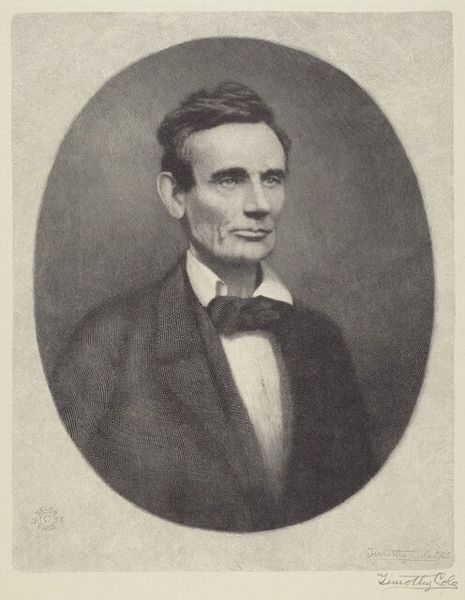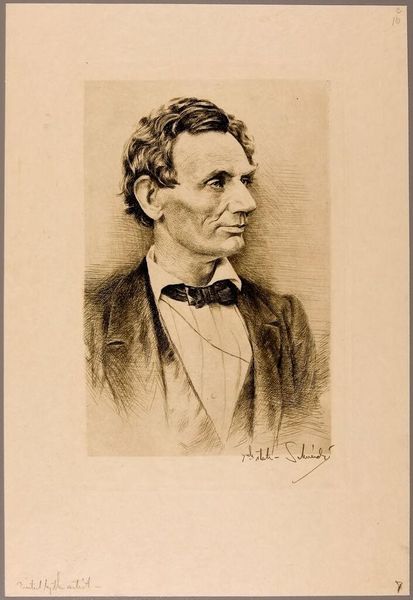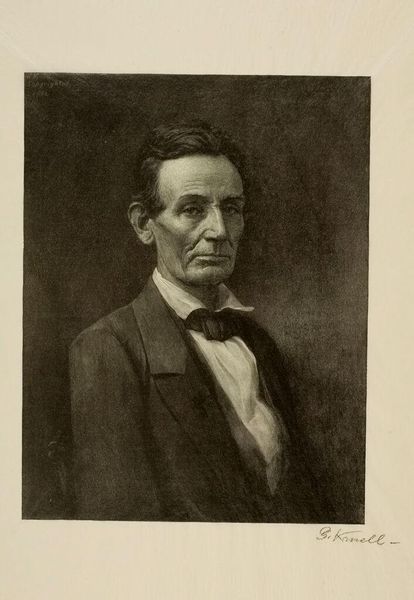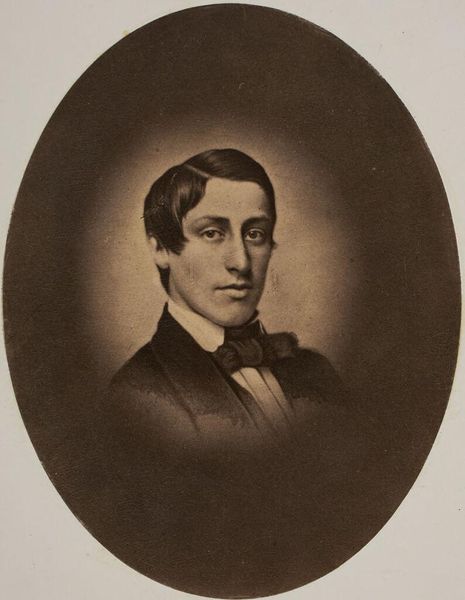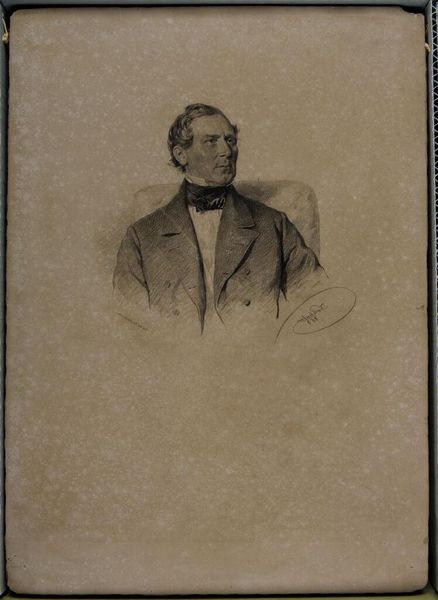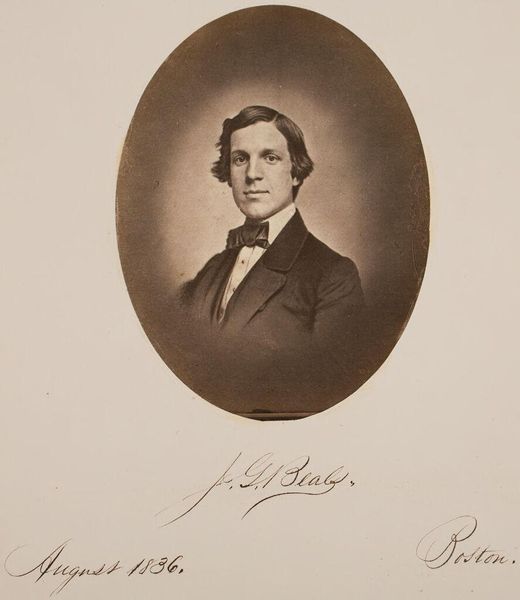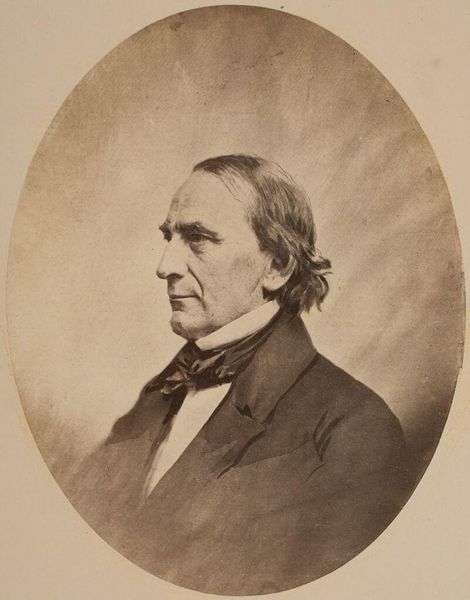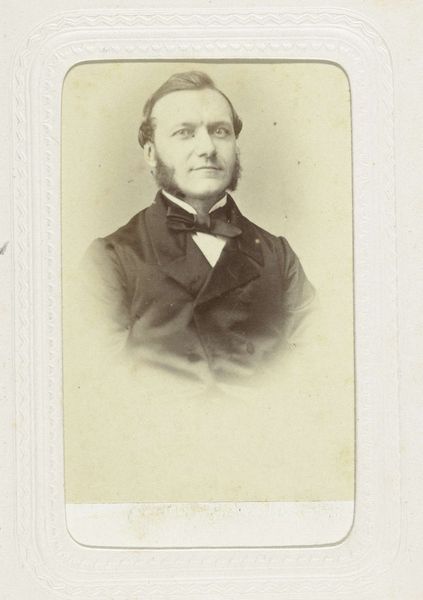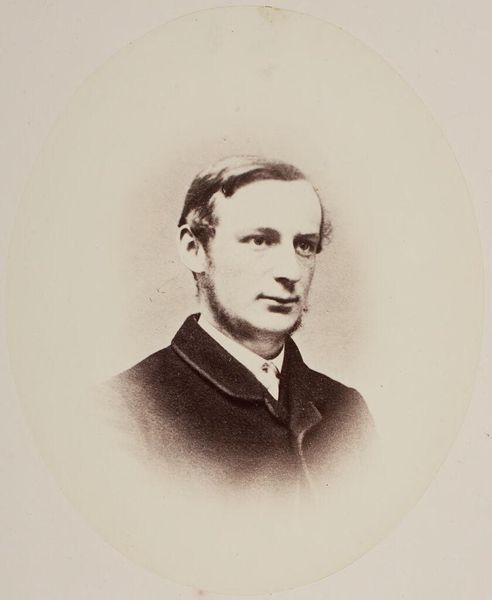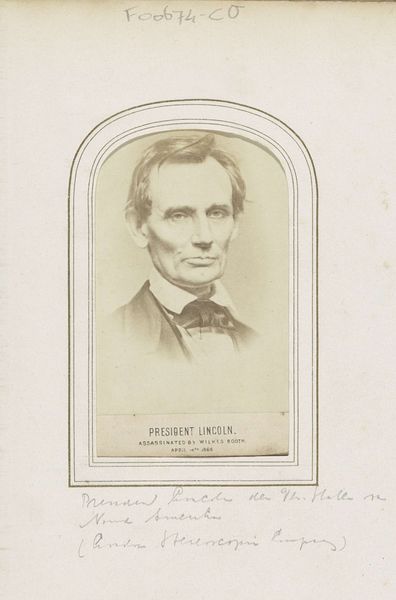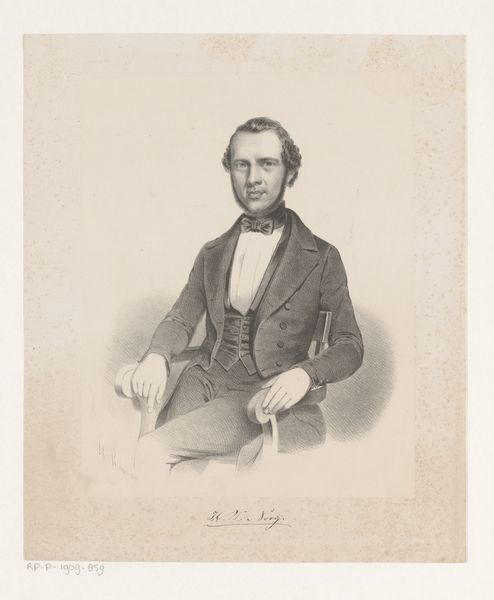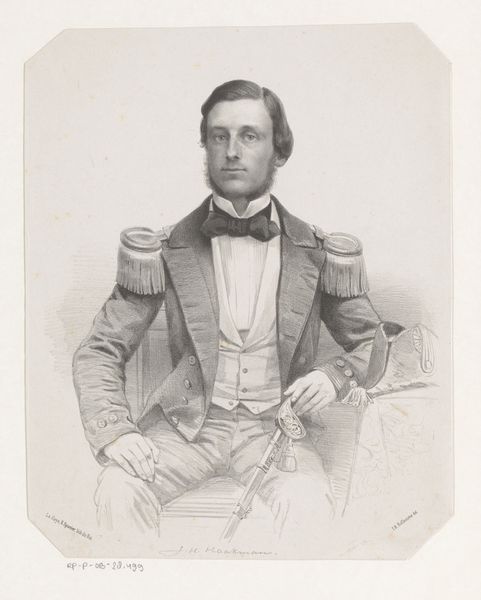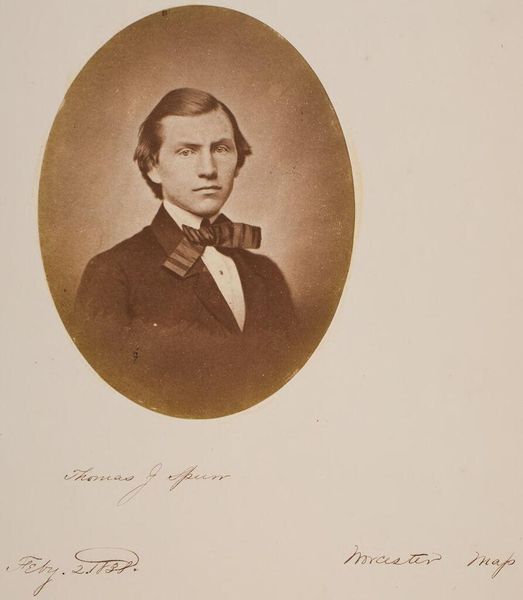
lithograph, print
#
portrait
#
neoclacissism
#
head
#
portrait image
#
lithograph
# print
#
portrait reference
#
portrait head and shoulder
#
animal drawing portrait
#
portrait drawing
#
history-painting
#
facial portrait
#
academic-art
#
forehead
#
portrait art
#
fine art portrait
#
realism
#
celebrity portrait
#
digital portrait
Copyright: Public domain
Editor: Here we have "Hon. Abraham Lincoln, Our Next President," a lithograph printed by Currier and Ives in 1860. There's a straightforwardness to the image, a stark contrast to some of the more elaborate political portraiture of the time. What can you tell me about it? Curator: The lithograph as a medium is key here. This wasn't a painting commissioned by the elite; it's a mass-produced print. Currier and Ives aimed at a wide audience, the emerging middle class. Think about the process: a design transferred to a stone, printed repeatedly, making art accessible. Editor: So, its value isn’t necessarily in the individual artistry, but the fact that it was so widely available? Curator: Precisely. The "Our Next President" tagline tells us about its purpose. It's advertising, a tool to influence public opinion, part of a larger machine that aimed to manufacture consent. This wasn't just art; it was propaganda, created for consumption, for swaying votes, for driving profit for Currier and Ives. What is striking is to understand how an image participates in shaping social discourse during such a crucial time in US History. Editor: I never thought of it that way, almost like a campaign poster printed at scale. Is that how people would have viewed it at the time? Curator: Certainly, this image was produced for wide distribution as ephemera. And although these types of prints were popular during the period, many have not survived into the twenty-first century. We must consider who had access to this type of image. Understanding who could purchase, display, and dispose of it, deepens our understanding of how it circulated among and impacted the public. Editor: That really changes my perspective. It is not just a portrait, but a physical piece of political machinery, mass-produced to shape a specific social reality. Thanks. Curator: Exactly! Now you’re seeing the matrix—or rather, the lithographic stone—beneath the image!
Comments
No comments
Be the first to comment and join the conversation on the ultimate creative platform.
